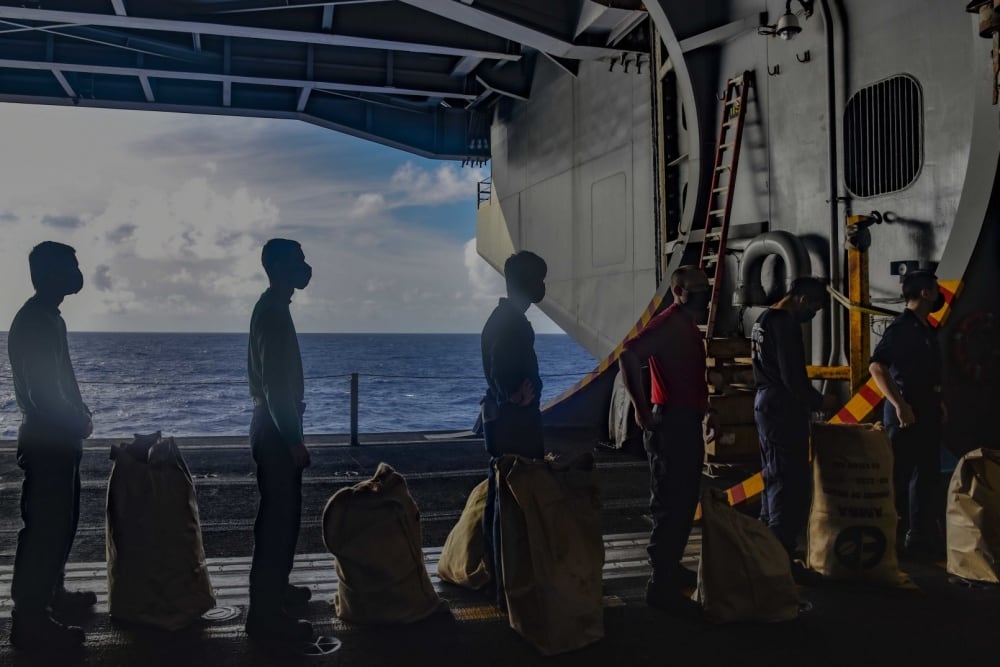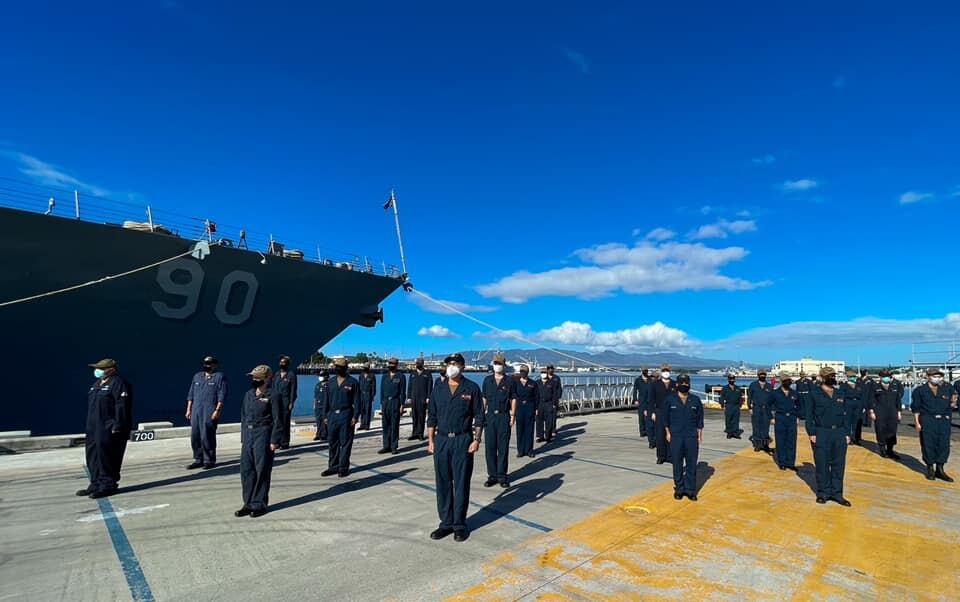The U.S. Navy had “policies, plans and procedures” to mitigate the spread of infectious diseases like COVID-19, but had not fully implemented such measures before the novel coronavirus pandemic exploded last spring, according to a report issued Monday by a Pentagon watchdog.
In particular, the Defense Department’s Inspector General found that four out of five Navy component commands didn’t conduct a biennial influenza and infectious disease exercise as required by the Office of the Chief of Naval Operations.
“Prior to the pandemic, the Navy did not fully implement measures intended to reduce the risk of the spread of infectious diseases,” the report states. “As a result of not conducing (the exercises), most Navy component commands did not exercise pandemic response in coordination with their supported combatant commanders.”
The IG evaluation, conducted from May to December, looked at the Navy’s response to COVID-19 aboard ships and submarines, focusing on the massive outbreaks last year aboard the aircraft carrier Theodore Roosevelt and the guided-missile destroyer Kidd.
RELATED

The IG report also found that several Navy publications in the past decade had warned about a shortage of personal protective equipment, or PPE, should a pandemic strike.
The Navy was not alone in getting caught flat-footed with PPE; shortages of masks, gowns and gloves reverberated across the federal government and the globe last spring.
One finding from the Navy’s doctrinal publication on expeditionary health service support afloat and ashore warned of potential problems with the “just-in-time” delivery of PPE for military medical facilities, a supply chain trend that extends beyond the military and deemphasizes mass storage of such supplies.
The publication called for “alternative solutions” should another PPE shortage erupt.
Another Navy publication from September 2014 urged further study and evaluation of supplies following the 2009 H1N1 bird flu pandemic, according to the IG.
In examining the Navy’s response to the COVID outbreak aboard the aircraft carrier Theodore Roosevelt last year, which led to roughly a quarter of the 5,000 sailors onboard getting infected with the novel coronavirus, the IG cites the Navy’s command investigation into how the TR chain of command handled the outbreak in March and April.
It blames “ineffective implementation of social distancing and the premature release of sailors from quarantine” as causes of infection on the ship.
While the IG report notes the lack of social distancing practices aboard TR, it also acknowledges the difficulties of social distancing within a ship’s close quarters.
A decision to release 900 of 1,000 TR sailors from aft quarantine came about “because the ship’s leadership believed that conditions in the aft quarantine area was creating ‘human suffering’ and that the large number of sailors in the aft quarantine area was crowded and unmanageable,” the IG report states.
The outbreak led then-commanding officer Capt. Brett Crozier to send a letter asking for more help for his crew and a fast tracking of efforts to get his crew onto land in Guam.
That plea was later leaked to the media and led to his firing.
The report makes nearly no mention of the COVID outbreak aboard Kidd, which had at least 78 cases onboard before the Navy stopped releasing updates on the ship in April.
The IG report states that ‘lessons learned” were still being gathered from the Kidd as of August, though the evaluation’s time frame spanned from May to December.
RELATED

However, the extent of the IG’s findings and their consequences remain unclear, as the publicly released report contains several redactions.
The reason for those redactions also remains unclear.
DOD IG spokeswoman Dwrena Allen declined to explain the redactions Monday or how IG’s redaction process works, instead referring questions to the Navy.
In a statement Tuesday, Navy spokeswoman Lt. Emily Wilkin said the report was owned by DOD IG, and that “the Navy is not responsible for what was or wasn’t redacted.”
Allen declined to comment further on the Navy’s statement.
“The Navy fully supports DOD efforts to highlight and incorporate lessons learned across the Fleet related to COVID-19,” Wilkin said.
TR and Kidd’s outbreaks remain the most widespread COVID instances in the Navy, according to the IG, and the sea service has implemented lessons learned from those ships.
“Although numerous Navy warships have had crew members diagnosed with COVID-19 while in port, the Navy ahs continued to deploy warships and submarines without additional widespread outbreaks that would otherwise cripple warships and interrupt their support to the combat combatant commanders,” the report states.
The IG report recommends that the Navy update existing infectious disease and shipboard quarantine guidance to reflect lessons learned from COVID-19, and Navy leadership told the watchdog that such updates are in the works.
The report also calls for the Navy to ensure its component commands are conducting the pandemic exercises it failed to do before the pandemic, and Navy officials said a tabletop exercise for such contingencies is planned for next month.
Geoff is the managing editor of Military Times, but he still loves writing stories. He covered Iraq and Afghanistan extensively and was a reporter at the Chicago Tribune. He welcomes any and all kinds of tips at geoffz@militarytimes.com.





